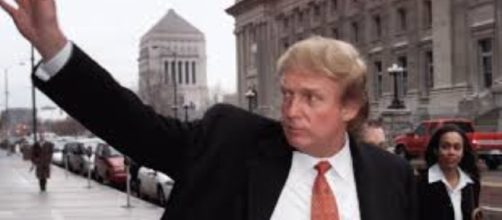At the Venice Film Festival last weekend, actors Julianne Moore and George Clooney railed against pro-slavery shrines to the losing side of the Civil War. Clooney’s new movie about apartheid in America during the ‘50s with Moore in the lead role made them fitting spokespeople for ridding public spaces of monuments that pay homage to the enemy of the people - the Confederacy.
Wrong side of history
President Trump has taken the side of those who want the monuments to stay in the public eye – on government property – sounding downright sentimental about them.
He tweeted how “sad” it is that such tributes need to be moved: “The beauty that is being taken out of our cities, towns and parks will be greatly missed.” Does his slogan “Make America Great Again” mean resurrecting White Supremacy? I say this because Trump hasn’t always shown he cared about testaments to the past. He unilaterally chose to destroy statues fronting a building that his Trump Tower replaced. Why? Saving the artwork would have delayed construction. Never mind that the statues graced the façade of Bonwit Teller, a high-end department store, which was founded in 1895 and was a landmark. Another thing: by destroying the sculptures, he broke his pledge to the Metropolitan Museum of Art to salvage the sculptures.
First modern art
The statues, each 15 feet tall and made of limestone, were not only part of New York history, but they were also a part of art history representing the style known as Art Deco. The genre held sway over pretty much everything in early 20th century America, from cars, trains, ocean liners, architecture, furniture – even vacuum cleaners. It was the first look of modernism in everyday life. The sculptures were not only part of art history and New York history, but also of movie history, featured in flicks like “Breakfast at Tiffany’s,” “Die Hard with a Vengeance,” “Oliver’s Story,” ” Rocky II” and on TV in the series “Mad Men.”
Artistic merit
It was understandable why the Met sought to salvage the statues.
But when asked at the time why he destroyed the artwork, Trump didn’t mention the delay in construction of his Tower. Instead, he told Tom Brokaw they weren’t worth much, that he had people looking into their value and was told they had no “artistic merit.” One may well wonder if the people that Trump sent to check out the artwork were the same he sent to Hawaii to check out Barack Obama’s birth certificate. Clearly he disregarded what Met vice-president Ashton Hawkins said of the statues: “Architectural sculptures of of this quality are rare and would have made definite sense in our collection.” But, hey, what does the Met know about art anyway? And given Trump’s confidence when it comes to fighting Isis – that he knows more than the generals - it follows that he knows more than art historians, too.


